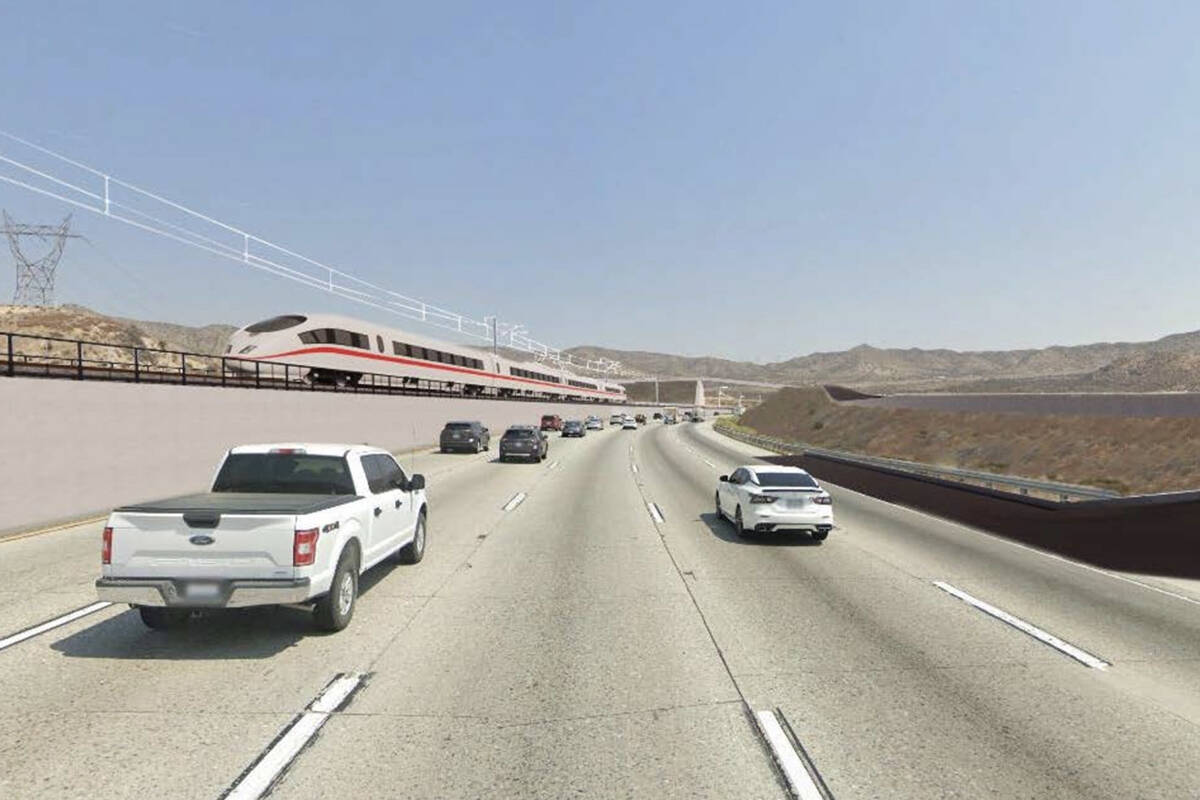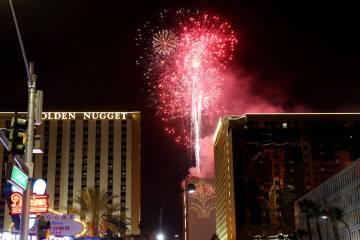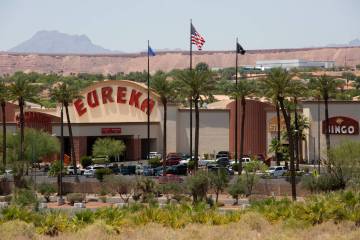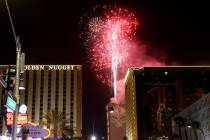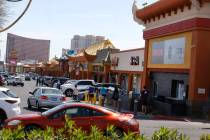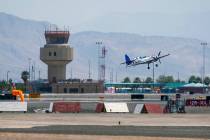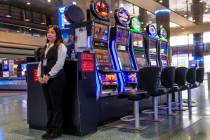High-speed rail project construction could begin in ’23
Brightline West is looking to begin construction next year on the long-talked-about Las Vegas to Southern California high-speed rail station.
The estimated $8 billion project would connect Las Vegas to Los Angeles via a route alongside Interstate 15 that would incorporate multiple stops in the high desert and San Bernardino County.
There are planned stations in Las Vegas and in California in Victorville, Hesperia and Rancho Cucamonga, where a connection with the Metrolink would carry passengers to and from downtown Los Angeles.
The Federal Railroad Administration recently released an environmental assessment report for the Cajon Pass portion of the project, a 49-mile extension of the track would run between the Victor Valley and Rancho Cucamonga. The assessment compared the potential environmental impacts of the proposed project to the impact of building nothing at all.
The assessment report noted the FRA determined that the Brightline project wouldn’t result in a significant impact to the environment or have a negative impact on low-income or minority populations. It also said that building the project was the FRA’s preferred option.
“Brightline represents the greenest form of transportation in the United States, with the potential to remove millions of cars every year from the I-15, and tremendous economic benefits for Nevada and Southern California,” Ben Porritt, Brightline spokesman said. “The environmental assessment underscores the positive environmental impact of utilizing the I-15 for high-speed rail and is a significant step in the process to receive the key approval to begin construction.”
It is estimated that 40,000 temporary construction jobs would be created to build the high-speed rail line.
The FRA is collecting public comment on the proposal through Nov. 28, with the project permits expected to be finalized by March. The line between Las Vegas and Victorville has already been approved.
The environmental report projects ridership figures starting with 2025, though the document also notes construction will take between three to four years. So, if construction started next year, it is likely the rail line wouldn’t be completed until 2026 or 2027.
At its opening, Brightline projects the Las Vegas to Rancho Cucamonga portion to service 5.6 million one-way trips annually, or 14 percent of the projected 49.1 million annual travelers between the two areas. That total jumps to 6 million passengers when adding the 380,000 projected person ridership between Hesperia and Rancho Cucamonga.
By 2030, ridership is expected to increase to 7.6 million for the Southern Nevada to Southern California line, with an 8.1 million total when adding the commuter passengers between Hesperia and Rancho Cucamonga.
In 2035, Brightline forecasts ridership between Las Vegas and Rancho Cucamonga to grow to 10.6 million. Total ridership, including the high desert commuters, would jump to 11.3 million.
By 2044, the last year of ridership projections provided in the report, the Las Vegas to Rancho Cucamonga line is projected to carry 11.5 million passengers and 12.3 million total with California commuters included.
At full buildout, the rail line between Las Vegas and Los Angeles will be 260 miles long with the trip between the two cities — on zero-emission electric trains — expected to take about three hours.
Plans call for a 65,000-square-foot terminal in Las Vegas that would be constructed on a portion of 110 acres of land owned by Fortress Investment Group, which owns Brightline through an affiliate.
Wes Edens, co-CEO of Fortress, is also in talks with Major League Soccer to potentially bring a team to Las Vegas. MLS Commissioner Don Garber confirmed last week those discussions include a potential MLS stadium on the same parcel of land.
Funding for the massive rail project would consist of a mix of federal grants and private activity bonds that Brightline would apply for in both Nevada and California, though the amount requested in each state could be less than was previously awarded.
Brightline previously was approved for $200 million in private-activity bonds in Nevada and $600 million in California. Internal Revenue Service guidelines would allow Brightline to market those tax-exempt bonds for up to four times their amount, or a combined total of $3.2 billion.
The bipartisan infrastructure bill signed into law last year could infuse increased funding for rail projects, such as high-speed rail. Details on what that could entail for projects such as Brightline’s is expected to be released by the end of the year. But that could lead to billions of dollars in federal grant funding for the Brightline West project.
The environmental assessment also notes the project would not only reduce passenger vehicles on the stretch of I-15, which would help ease freight strains, but would also decrease greenhouse gas emissions.
“I can’t think of a more shovel-ready project in America than this one, or a more environmentally friendly one,” Edens told the Review-Journal earlier this year.
Contact Mick Akers at makers@reviewjournal.com or 702-387-2920. Follow @mickakers on Twitter.



